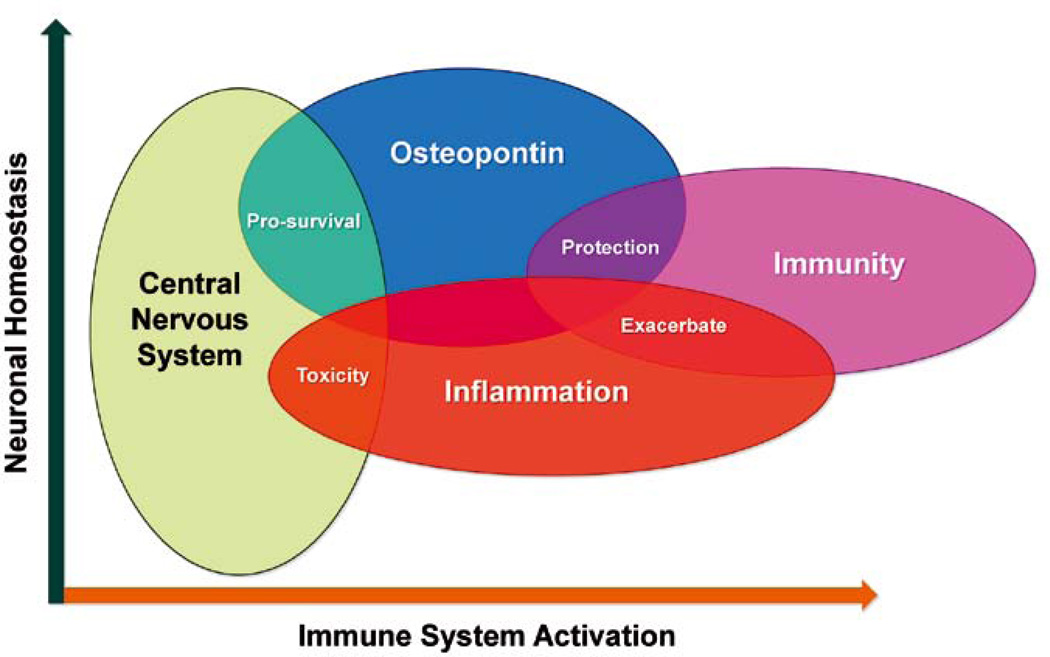Figure 1.
Osteopontin (OPN) as an inflammatory mediator at the neuroimmune axis. OPN secreted from activated macrophages and microglia, and possibly other cells in the CNS can, through the release of specific cytokines such as IL-12, stimulate cell-mediated immune responses of the adaptive arm of the immune system. Inadvertently, OPN via activation of signaling pathways that induce NF-κB, can upregulate HIV-1 replication, thus exacerbating virus replication. OPN can also modulate the expression of other inflammatory cytokines. When OPN release is chronic and sustained, toxicity can result that can lead to the dysfunction and degeneration of neurons and perhaps of glia as well. Alternatively, in models of hypoxic ischemia, OPN can promote cell survival by inhibition of apoptotic pathways.

